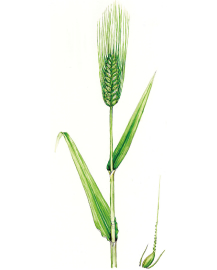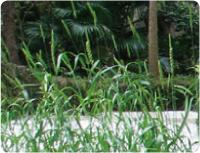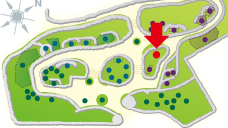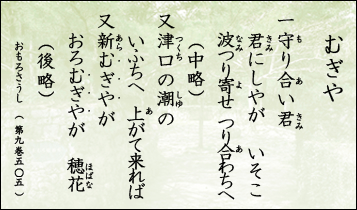Traditional Okinawa Village and Omoro Arboretum
Hordeum vulgare
General description

| Omoro name | Mugiya |
|---|---|
| Japanese name | Oomugi |
| Family name | Poaceae |
| Okinawan name | Ufumuji |

Location within the park

Characteristics
Hordeum Sponta-neum C. Koch, which is said to be the origin of cultivated Hordeum vulgare, is widely found in West Asia, and agricultural species are produced in various locations including the main producing area Europe, as well as Japan, America, Canada and Chili. Its stem stands upright in the air and grows to be about 3.3 feet tall. Its leaf is shorter than that of wheat, and is wide and hard. The ear grows from the tip of the stem with spikelets lining up on the joints. Agricultural species are divided by how these spikelets line up, i.e. those that line up vertically in six rows are categorized as Hordeum vulgare L and those that line up in two vertical rows are categorized as Hordeum distichum L, each with different purposes. In Japan, Hordeum vulgare L is generally called Oomugi.
Utilization
【fruit】 : ingredient for miso and soy sauce, livestock feed, cooking mixed with rice and other grains, parched flour, making beer and wiskey
【culm】 : material for straw hat and basket, powder for medicinal use
Best Time To See Calendar

Omorosaushi (505 of Volume 9) Mugiya

Meaning of the song
The protective priestess
Draws the waves that dash against the boat that the priestess is protecting
And makes the ocean calm
(partially omitted)
How the tide at the harbor entrance
Comes up the seashore
Is like newly grown ears of freshly harvested Hordeum vulgare
(omit the rest)








